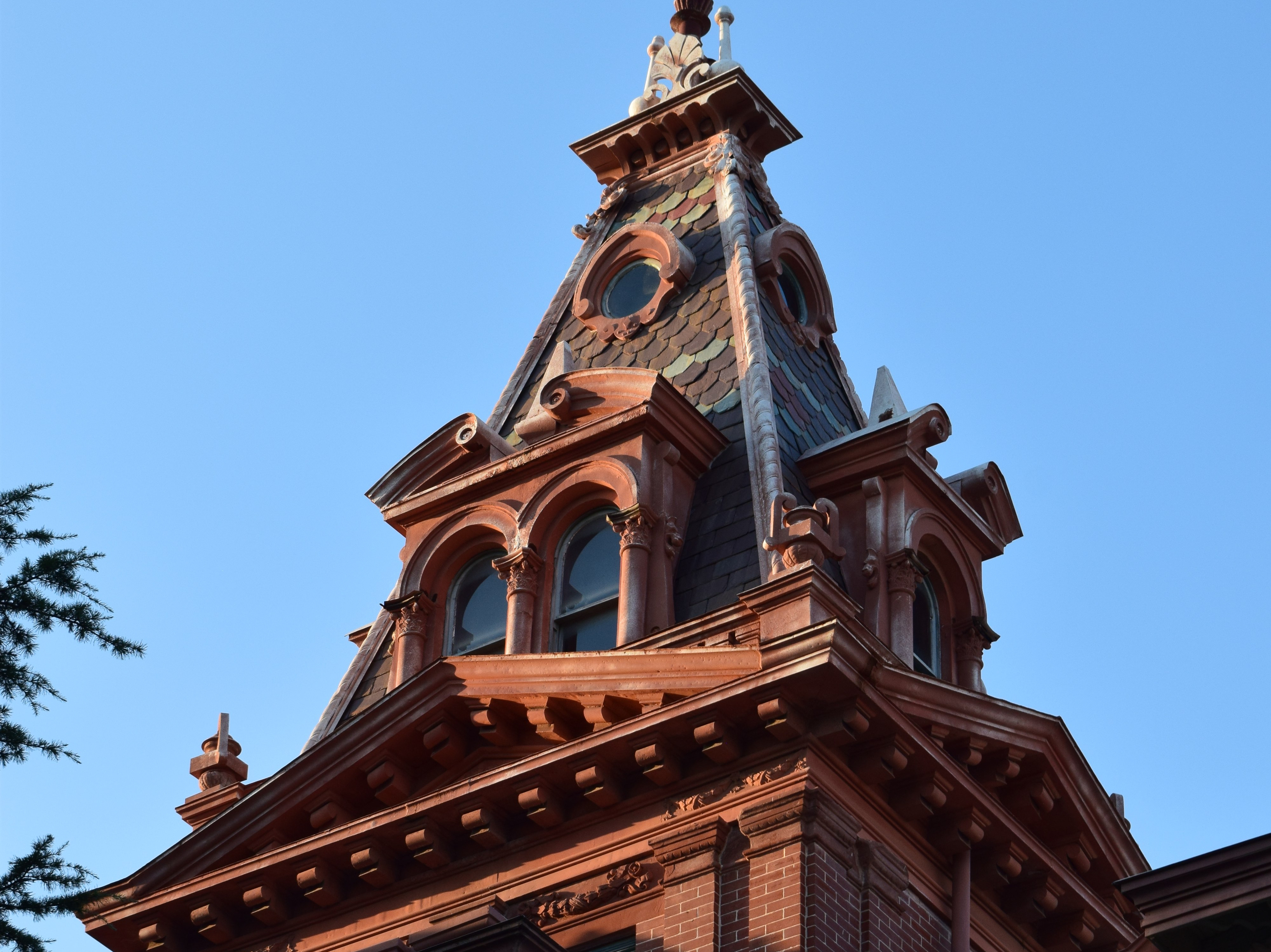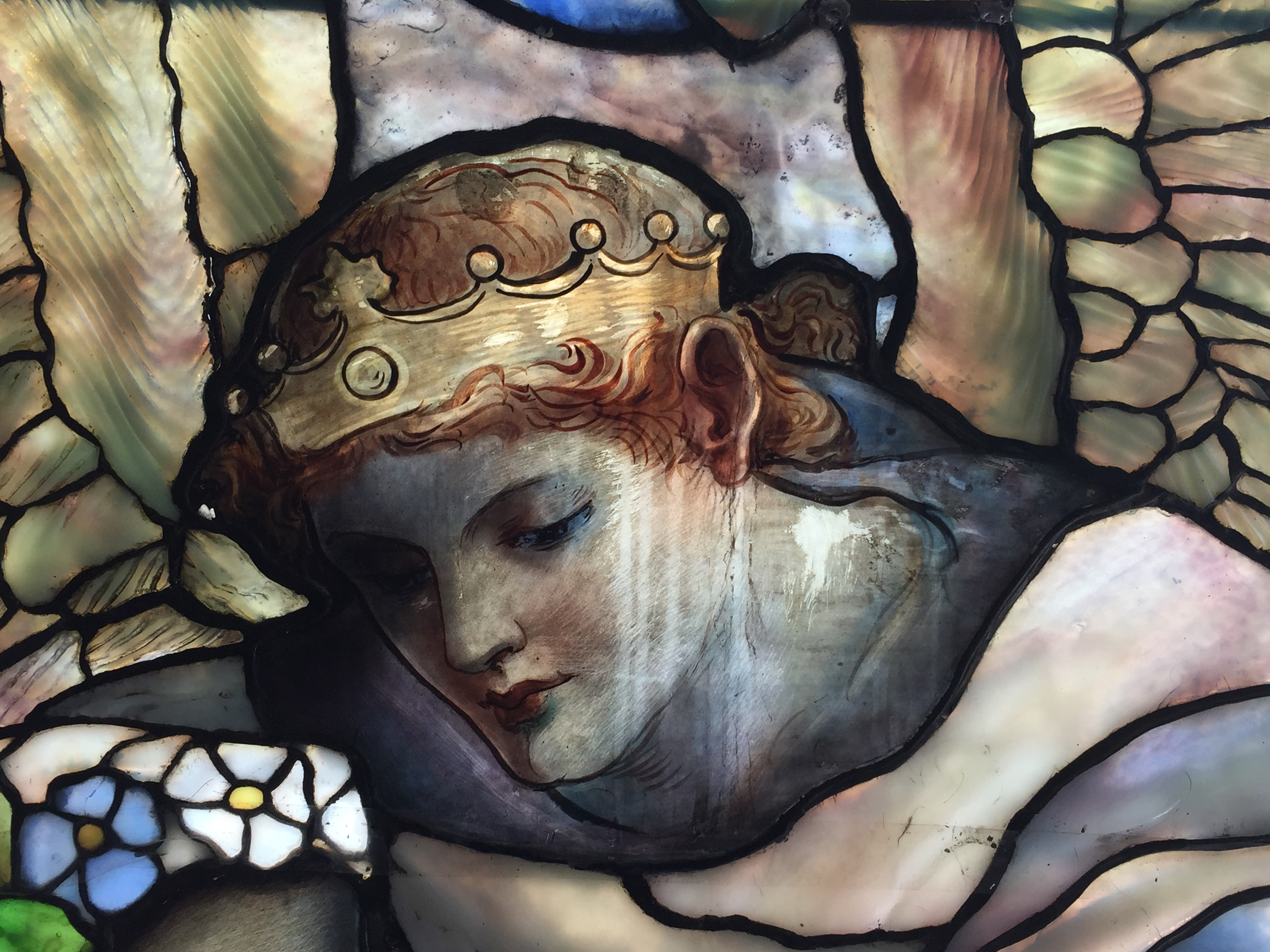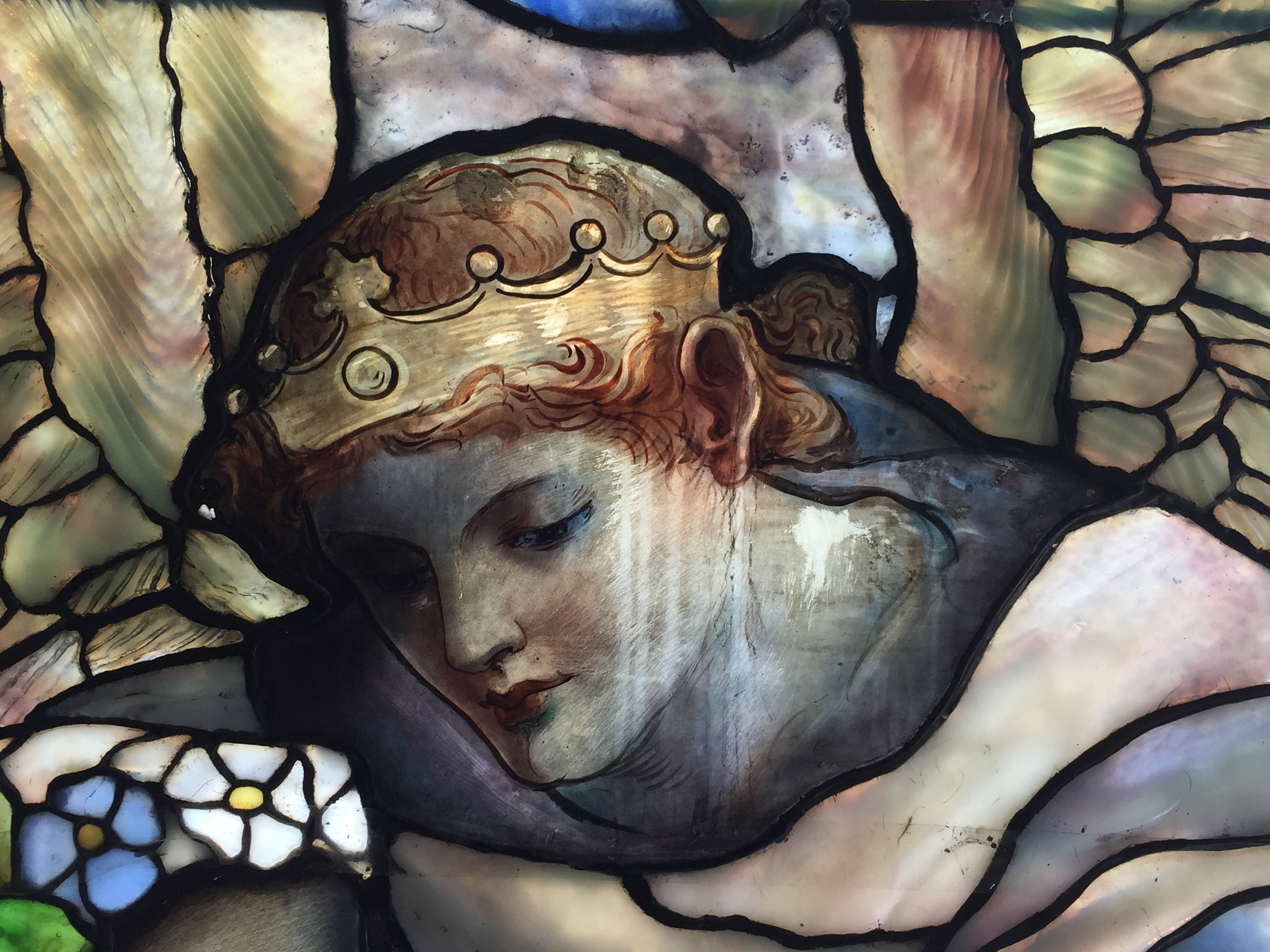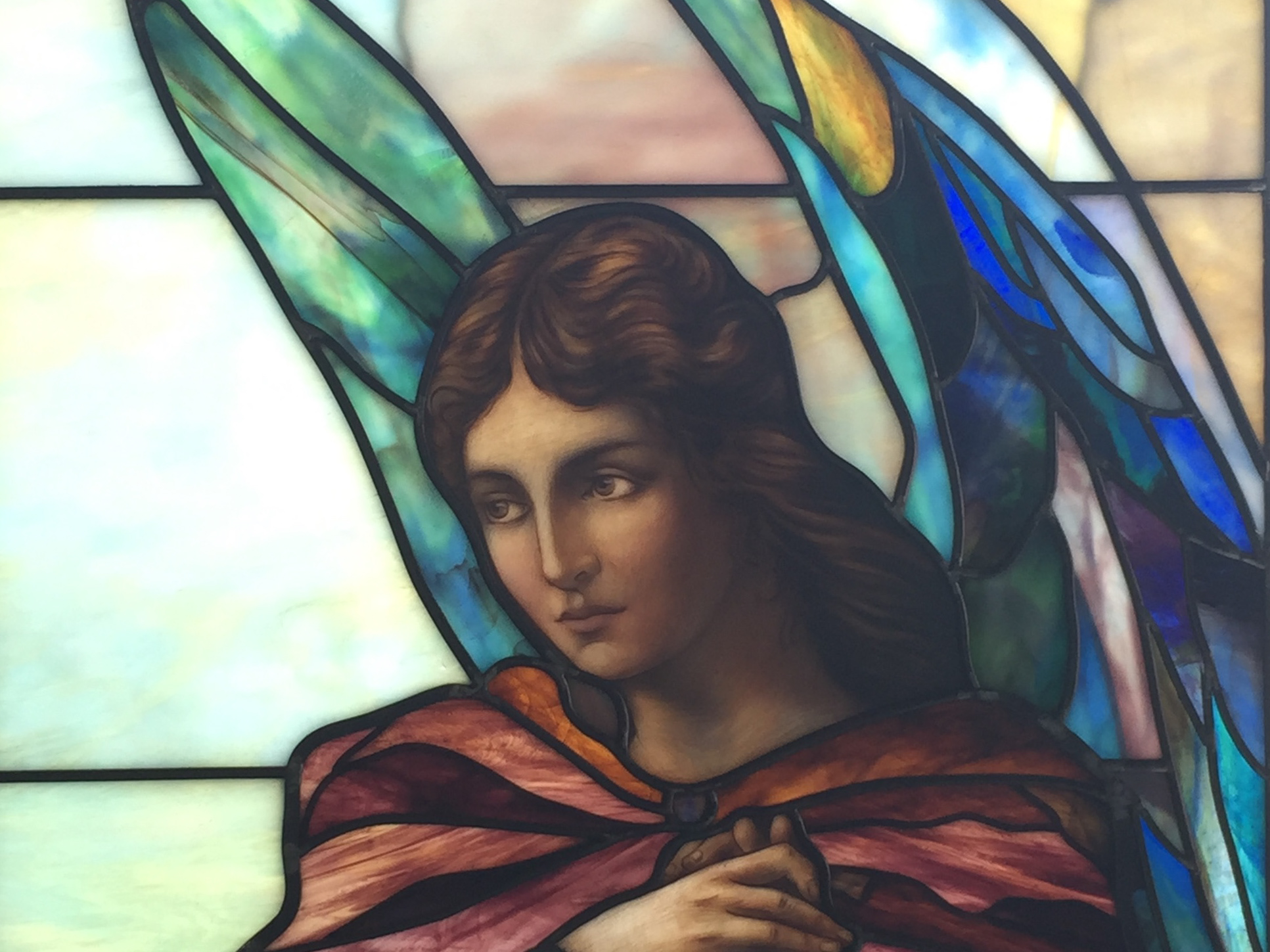INTRODUCTION: Located in Hillside, Illinois, a suburb of Chicago, the Oakridge Abbey is a community mausoleum containing a series of stained glass windows by artist and craftsman Edgar Miller. Research for this report was gathered from the Edgar Millar Legacy Archives, Chicago area archives, and an on-site investigation. Additional sources referenced include the National Park Service Preservation Briefs; the English Heritage Practical Building Conservation, Glass and Glazing manual; and technical manuals on the subject of architectural material conservation. The data collected during the condition survey was used to develop individual condition reports for each window as well as annotated images indicating found conditions.
East Facade of the Oakridge Abbey
MAJOR RESEARCH FINDINGS: This collection of stained glass is significant as a surviving example of Edgar Miller’s work in situ. An accomplished artist, designer, and craftsman, Edgar Miller was a member of the Old Town Artists Colony and prominent contributor to Modern design in Chicago throughout the 20th century.[1] Miller began producing stained glass in the 1920s. His 1927 windows in Oakridge Abbey are a result of one of his largest commissions in the medium. Miller continued to contribute windows to the building through the early 1930s, making the collection a visible timeline of his growing skills and mastery of the craft. Furthermore, the assembly of several of the earliest panels installed in the abbey are known to be assembled by Temple Art Glass. Located on West Schiller Street, Chicago, the Temple Art Glass company was utilized by many prairie school architects during the 20th century and was the studio Miller employed to execute many of his windows for the Old Town studios.
MAJOR ISSUES IDENTIFIED: Issues identified as high priority center around poor moisture control and moisture induced deterioration of the building structure, a lack of informed maintenance, and the use of improper protective glazing. All of these conditions have contributed to the deterioration of Miller’s stained glass windows, several of which will need to be removed and treated to address built-up grime, breaks, loss, failing lead, and poor previous repairs. The choice of material and state of the protective glazing elements present on many of the decorative windows is also contributing to the deterioration of Miller’s stained glass windows
RECOMMENDATIONS FOR TREATMENT: Treatment recommendations are provided for each window within the object’s individual condition report as the issues faced by each are unique. In order to prevent further damage to the stained glass windows, recommendations regarding the overall preservation of the building are also included within this report.
[1] Larry Zgoda, “Edgar Miller’s Unique Modernist Style Revealed,” Stained Glass Quarterly 82 (1987): 312.

Window 8. Exterior, reflected light.

Window 8. Interior, transmitted light.

Window 8. Interior, annotated image showing conditions.
Window 8: The window features geometric patterns which are mirrored across a central vertical pillar. There are four birds (pigeons or doves) facing each other at the top and eight additional birds facing outwards down the edges of the window. While the glass and matrix pattern on the left and right-hand side of the window is a mirror image, most painted details and some glass colors are not symmetrical matches. The window is composed of small, solid colored pieces of glass. A majority of the pieces are painted with abstract patterns, shading, or line work to create stylized bird and foliage imagery. Lead joints are tucked.
Annotated image (right) identifies found conditions.
Window 46: Panels A and B are set in a double door. Each feature 3 white birds arranged vertically with heads facing in alternating directions. The birds are surrounded by geometric and abstract organic shapes set inside a red, white, yellow, and clear border. The painting style consists of line work, shading, and subtractive techniques typical of traditional stained glass work. The imagery painted on the surrounding pieces consists of geometric and abstract patterns. Decorative lead has been used to accomplish the beaks of the birds. At the center of the lower border on each panel is a small piece of blue glass painted with the monogram “E M” (panel A) and “A E 1927” (panel B). Panel C is a transom light consisting of a repeating shell pattern featuring a light tan painted glass outlined by blue and red pieces.
Annotated Image (right) identifies found conditions.
RECOMMENDATIONS: Treatment recommendations were intended to address both the deterioration of the building and stained glass windows installed within. Specific treatment recommendations for each individual window were provided in each object’s condition report.
Specifications should be made to ensure that care is taken during the treatment of the stained glass windows, whether on-site or those removed for treatment off-site, to protect the panels, neighboring materials, and personnel. Prior to performing any cleaning, a test should be performed on a discrete area of the panel to make sure there are no adverse effects. Repairs should be made with compatible, tested, and in-kind material where possible. Treatments should be undertaken by a professional stained glass conservator with at least five years of related experience. The conservator should be a member of the American Institute for Conservation and should be able to provide references of comparable projects. .







